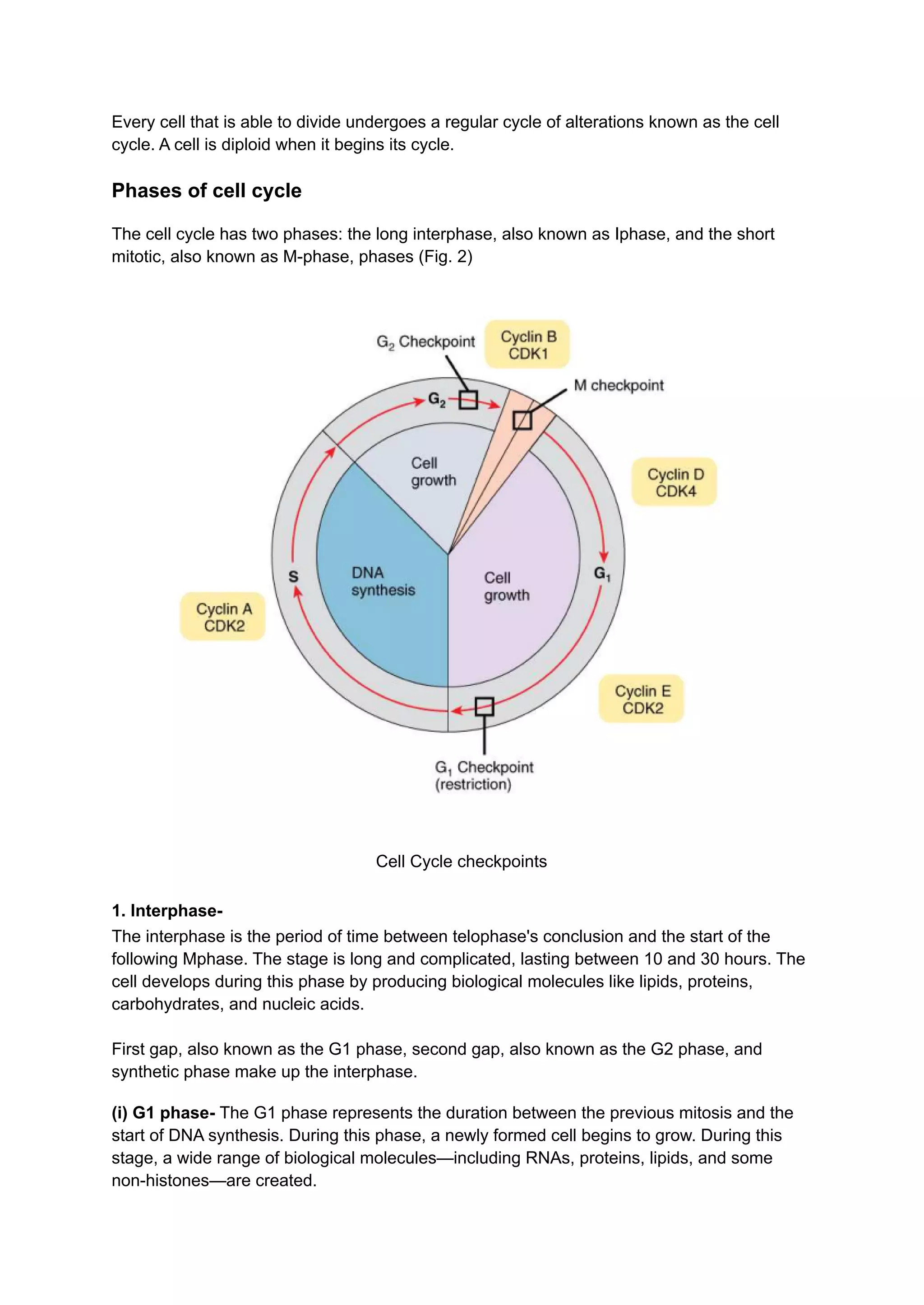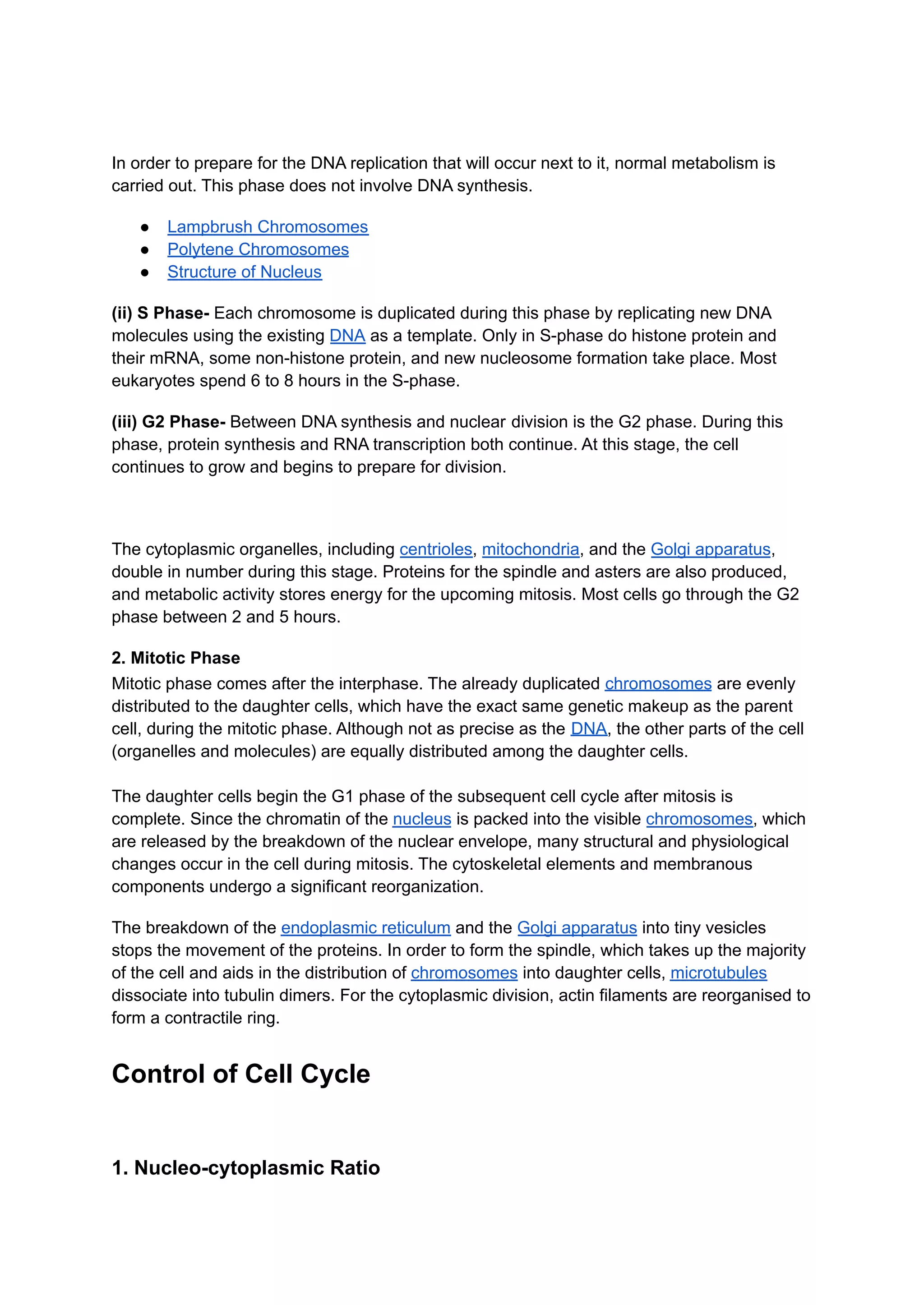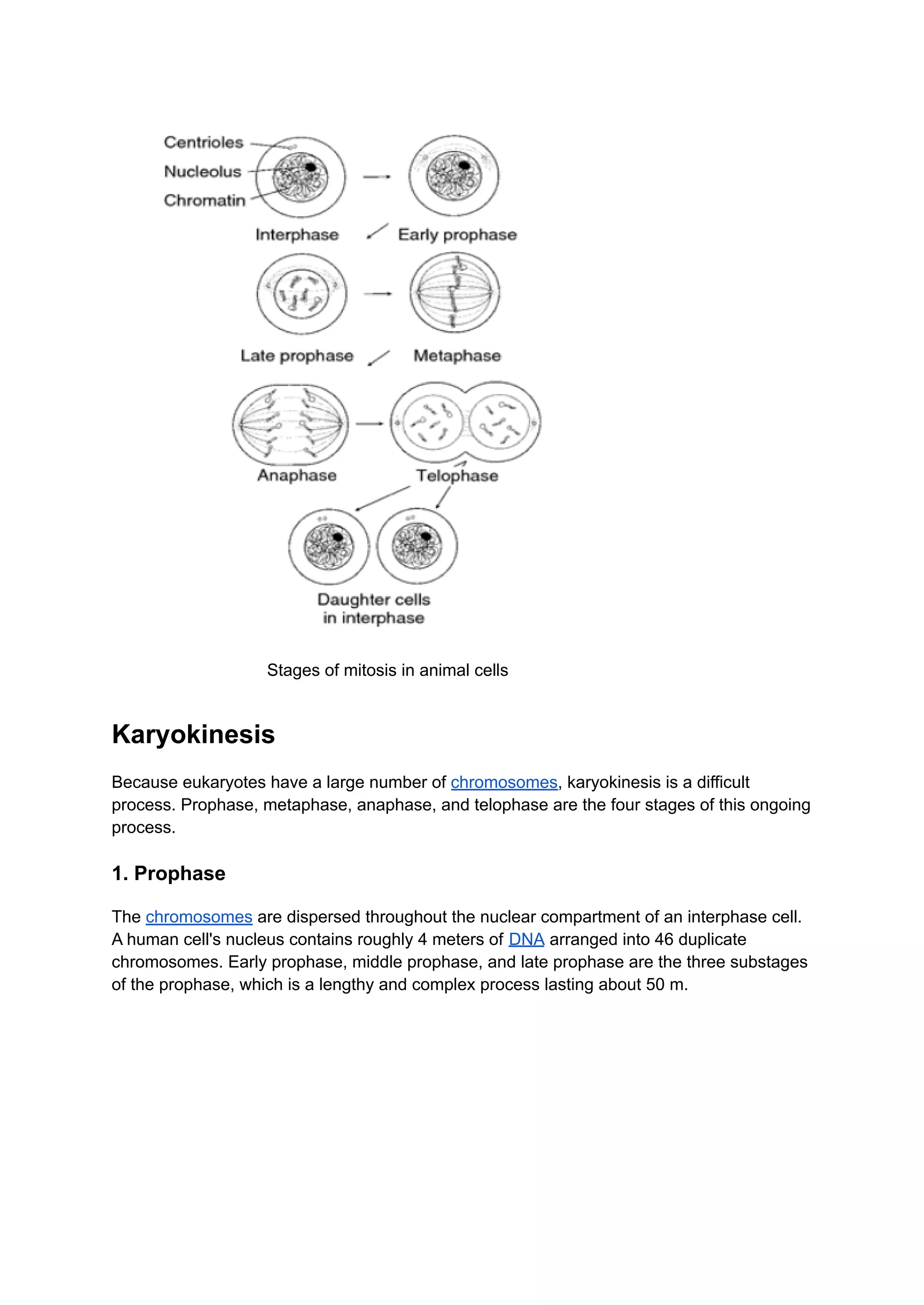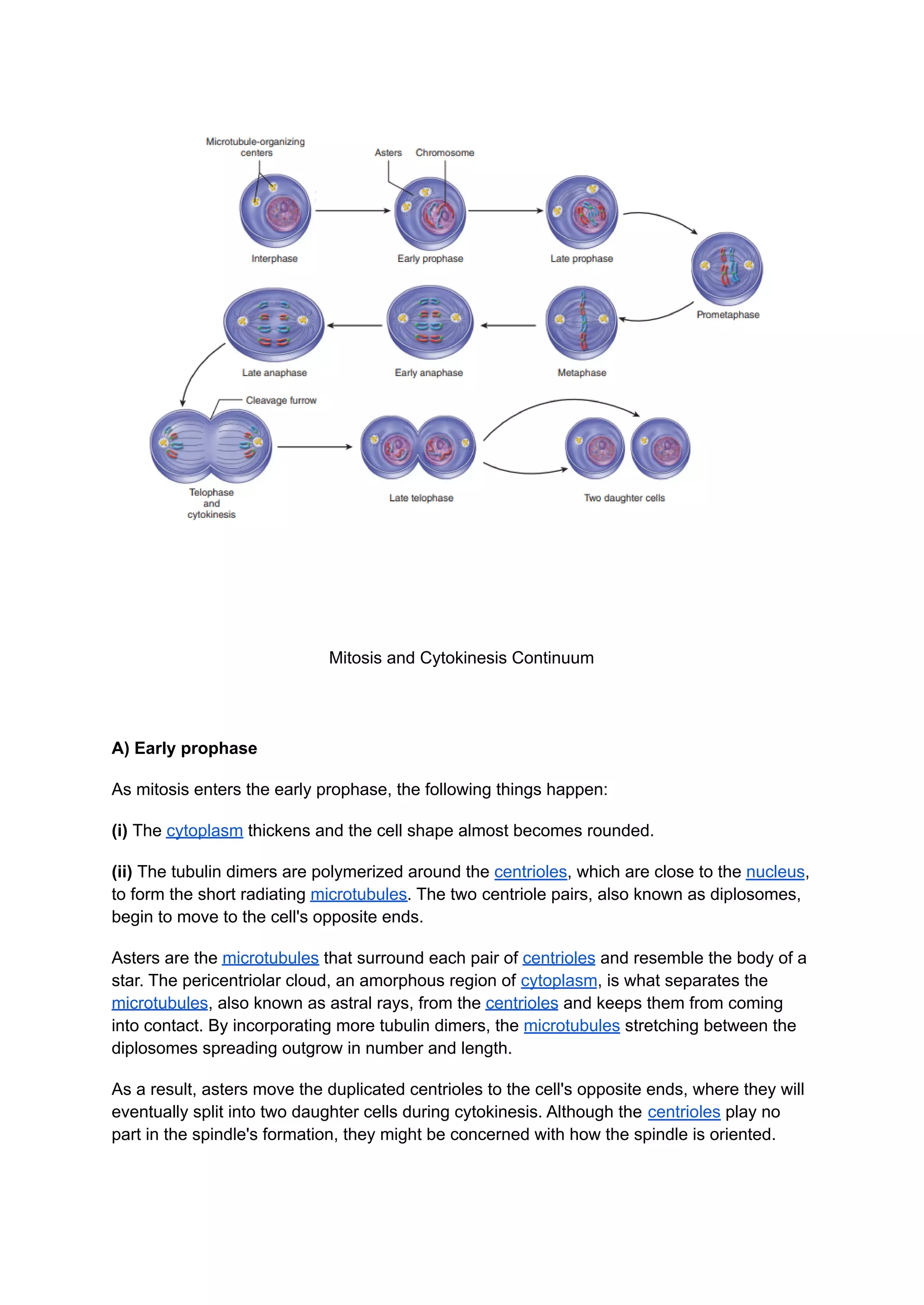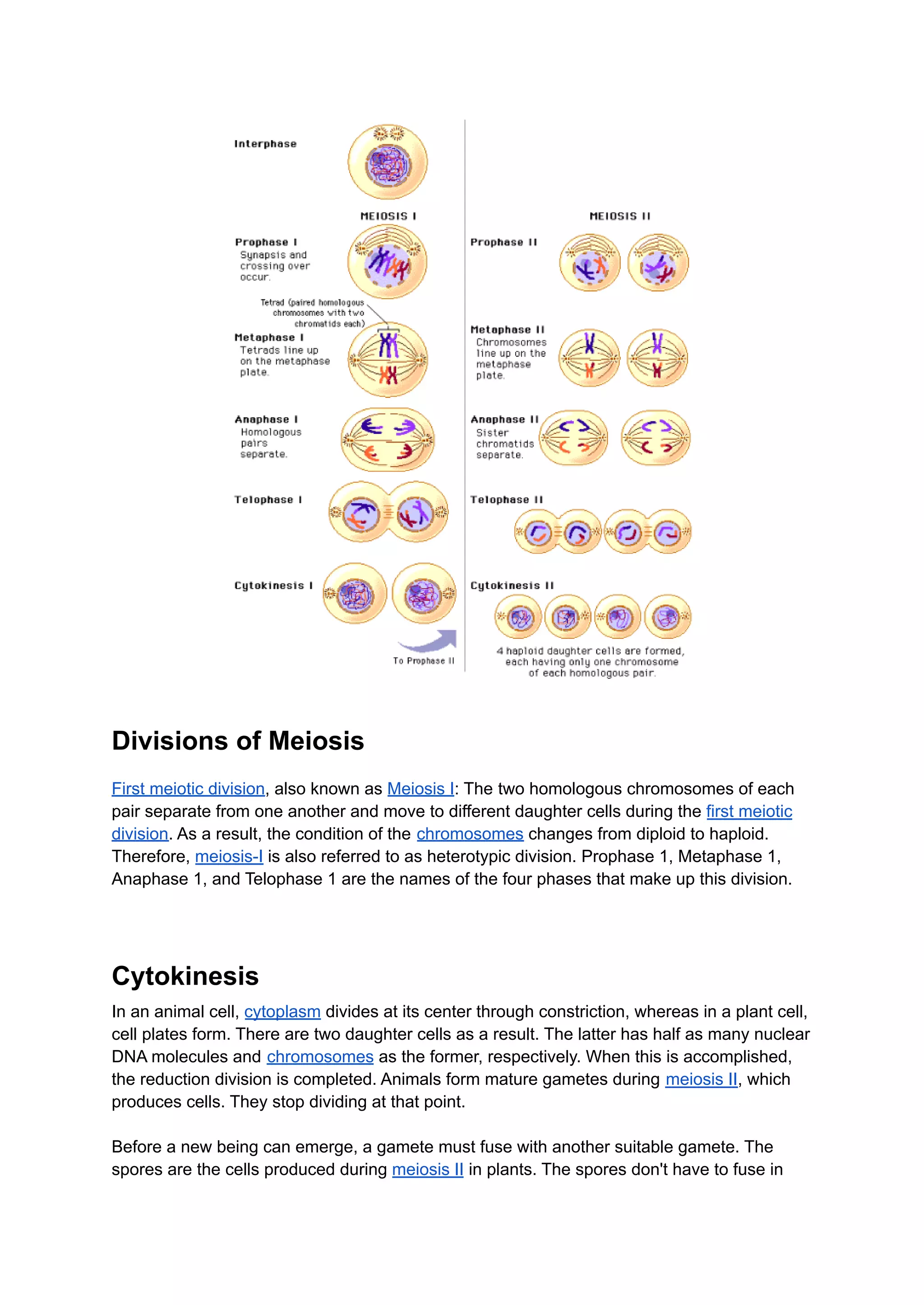The document explains the process of cell division essential for growth and development in multicellular organisms, detailing the phases of the cell cycle and the mechanisms of mitosis and meiosis. It highlights the significance of mitosis for maintaining chromosome number, facilitating growth, repair, and regeneration, as well as reproduction in various organisms. The cell cycle includes interphase and mitotic phases, with checkpoints and regulatory mechanisms governing the progression of cell division.

